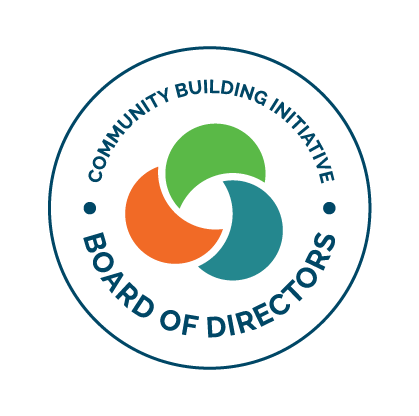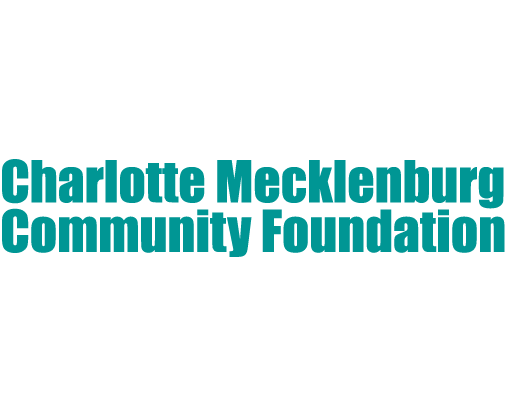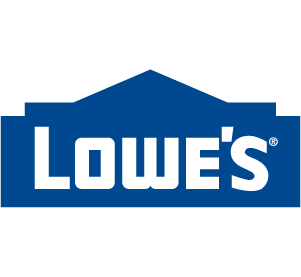One of our greatest challenges as a community is our collective unwillingness to hold ourselves up to the mirror. It’s hard to hold an entire community up to a mirror because depending on what part of a community you are from – you can see something different. We lack a consciousness that is free from difference, so much so that our nation faces an existential crisis of identity right now.
Who are we?
Let me talk about who and what I think this community is.
In 1971, just a few days before I was born, the United States Supreme Court declared busing as a legitimate form of school desegregation. The case originated right here in Charlotte and was argued by Julius Chambers. My grandparents had taught in formerly segregated schools. In fact, my grandfather had been a principal at old Reid High School in Belmont. They closed the school. He lost that job and later taught at Alexander Junior High School up in Huntersville. Despite their personal sacrifices, they saw this decision as progress. No longer would their children or grandchildren be relegated to second-hand books, uniforms, facilities – all signals the larger society gave them that they were inferior. No. Their children would get the same thing white children got.
On the other side of town, folks were upset. You mean, my children will be going to school with their children? There were protests and unrests on some of the school campuses. And yet, it took a mountain of a man, C.D. Spangler, to enter himself into the fray as a candidate for the school board to set the example. Not only did C.D. Spangler appoint Leroy “Pop” Miller, a former West Charlotte administrator, to become Principal of East Mecklenburg High School, a mostly white school. But he himself sent his daughters to the formerly all-black West Charlotte High School. If one of the richest people in all of the nation could take that step, other people could, too.
These actions put in motion a context in which I could grow neither fearing nor falsely elevating my white counterparts. I could understand myself as an equal.
I did understand myself that way – to a point. One rung on the ladder of understanding for me was realizing that I had as much intellectual capacity as the next person. That my blood was red just like the next person. That their needs and wants were the same as mine.
As I think about it, the one thing I never felt as a child was powerful. I felt as though I had a slim margin of error and, while I played within that margin for the most part, I did test it.
I used to play basketball over at the Central YMCA – now the Dowd Y. The after five group included a number of police officers, including an officer named Randy Stitt. These guys would ask me about how I was doing in school, and they marveled at my gorilla dunks.
Well, to make a long story short, when I turned 15, one of my good friends, Scott Culpepper, invited me to drive his car, an old beat up Citation with power steering but no power. The steering wheel was almost impossible to turn. I had a learner’s permit; he had a license, it sounded like a good idea at the time. I started driving and the car was swerving like nobody’s business. Before I knew it, blue lights started flashing. We got pulled over. I had never been pulled over before. I was nervous. The officer came over to the driverside door, very authoritatively and I freaked out. “What did I do wrong?” I asked. Just tell me!
The officer told me to shut up, which frustrated me even more. Things began to escalate. Scott, who is white, gave me the talk. You know, the talk. All of a sudden, five more police cars show up. Then, something amazing happened. The officer all got out of their cars and huddled. The officer who had pulled me over started waving his arms in frustration. Then, I saw a figure approach the car – and guess who it was? Randy Stitt. He told me that he had to calm his colleague down, that I would get a warning ticket and that I should probably not drive the car anymore. I decided two things right then and there: one, that community policing works and, two, I was going to become U.S. Secretary of Transportation.
I point this story out because I know what people feel about the criminal justice system and its unfairness specifically to African Americans. I understood it as mayor, and I understood it when I watched our city on fire in September 2016 while I was attending a Transportation Summit in Japan. What struck me was – despite all of our history, locally and nationally, how easily the frustrations can be understood in the context of protest and how hard these same frustrations, hopes, ambitions and needs could be misunderstood in the context of making policy.
The Beatties Ford Road Corridor – the part of the city I grew up in, has been in rough shape for a long time. As a city council man and as mayor, I represented the entire community but I took a deep interest in trying to figure out how to turn that corridor around. We passed neighborhood bonds – getting Ike Heard, Sr and his neighbors in McCrory Heights the sidewalks they had been promised 50 years earlier. We put a police substation on the corridor. We put a business park on the corridor – where the Mecklenburg County Bar now sits. These things happened on the QT. However, when we made a run to put a Streetcar on that corridor, all hell broke loose.
It is a streetcar to nowhere, some said. We are taking it out of order, others said. It is a waste of money, others said. What I wanted to say – and sometimes did say – was, “Just listen to yourselves.” We put a bridge over I-485 in Ballantyne. We built farm-to-market roads in the University area and extended light rail there. What is our answer for East and West Charlotte? There is enough wealth, ingenuity and need for the private sector to join the city in reinventing the Beatties Ford Road Corridor and, in doing so, showing ourselves and the broader world that this city is serious about tackling its problems. It is not just a matter of transportation; it’s a matter of building a sustainable community and access for all. And the same is true of East Charlotte.
We were trying to piece together an affirmative theory of community – one that could propel us into a future of shared prosperity and growth, a variation of the same affirmative theory that motivated Julius Chamber to do what he did and C.D. Spangler to do what he did. By the way, do you see any markings around this city celebrating these two remarkable people? They deserve to be remembered.
I had a chance to visit Cape Coast in Ghana two years ago. I had read about slavery in textbooks but our textbooks do not begin to reveal its horrors. Imagine a father being captured, along with his wife and child. Chained at the ankle and arm and marched into a fortress. In the middle of this fortress, this new stock was conditioned for transfer in the TransAtlantic Slave Trade. Conditioning meant that they were transitioned from their human state into chattel. In that fortress, they were stripped naked. The man’s wife might have been raped before the entire crowd. Men might have tried to protect her only to be shot. This was psychological warfare. These people were not passive. Many jumped from boats leading them to larger ships rather than suffer a life of bondage. Families were broken up. The father might have ended up in West Indies. The might have ended up in Charleston. The child might have ended up in South America. The trade was so grotesquely inhumane that records were barely kept – we cannot now reverse engineer how many people were actually sold into slavery and we may have to rely on DNA to reconnect families across such great distances. Our national economy relied heavily on slaves in early American history. Many of our iconic structures were built by slaves – the White House, the Capitol. Many institutions grew up around slavery – the stock market. We know these things and yet we tend to act as though they have no present day significance. That was then, this is now. And, yet, there is Ferguson, Staten Island, Baltimore, Charlotte, Charlottesville.
So what do we make of all of this? What is the answer?
Let me offer three ideas, some of which I have alluded:
First, Charlotte needs to stop worrying about what the world thinks of us and focus more on what we think of ourselves. I say this because when our community’s reputation is so fragile, it almost by definition makes protest the most effective strategy to force action. I know Harvard is a good school but why did it take a Harvard University study for Charlotte to realize it had an income mobility challenge. Where has our own conscience been? And why did those who were telling us to focus on this issue not heard? I love this city but it harbors an insecurity about itself that threatens its future and it sometimes overrides our self-awareness. We need to see our own problems first and solve them as best we can rather than worrying about our reputation, an approach that also risks window-dressing solutions that cause deeper unrest.
Second, we need to develop a concept of all, of all people. Said differently, we need to get comfortable with the idea that, unlike other parts of the world, being an American or a Charlottean requires enlightenment and constant adjustment because we don’t all look alike or pray alike or come from the same parts of the world. This is a national challenge, and it is profound.
We are going through the most dramatic demographic shift in the nation’s history. It is no longer black and white. We are Asian. We are Latino. We are men and women. We are straight, gay, lesbian, transgender and queer. We are rich, middle-class and poor. We are urban, suburban and rural. We are all of these things but we are fragmented.
When I ran for mayor for the first time, I hired a consulting group that had deep experience helping African American mayors get elected. They set me down and said, “We have to tell you some things. First, you’re black.” I feigned a look of surprise. “Second, white voters are going to be concerned about two things: soft on crime and that you will raise their taxes.” “Third, you will never win a majority of white men so do not even try.”
I did not take the latter advice but it did prove to be statistically correct. But what does that say about how our politics is shaping our relationships? It says that political campaigns have gotten very good at putting us against each other.
If we want to fix our politics, then we have to fix our relationship to each other. Politicians are not going to heal the fractures we see so evidently today; political parties are built to exploit those fractures. We have to take responsibility for practicing the hopes we all have for a community that really figures out how out of all these many voices and faces, we can become one. This city has done it before, and it can do so again.
Finally, try. Too often we leave it other people to figure out solutions that we could better develop ourselves. Or we figure that the little things we can do will not add up to much. But look at the quiet heroism that is happening here:
Pamela Grundy is a Charlotte-Mecklenburg School parent who is in the trenches every day. She is literally willing schools like Shamrock Gardens to be better.
Gene Winchester and Woody Daniels are local barbers who helped jump start “Cops and Barbers,” a unique dialogue between the Charlotte-Mecklenburg Police Department and the African American community – and it has branched out beyond Charlotte.
Davidson College President Carol Quillen has bravely launched an effort to explore that institution’s connections to slavery.
These are just examples of people right here in this community who are using what they have to set the stage for a better community.
These are great examples. But there are many more.











